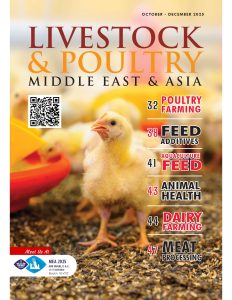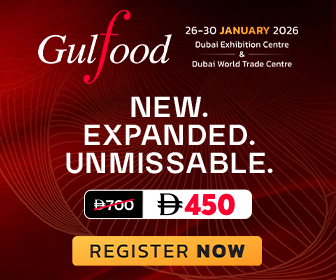Innovad opened the discussion on mycotoxin risk assessment and the tension between feed analysis and biomarkers. Up to now, raw material and feed analysis have been the sole tool used to evaluate mycotoxin exposure. In consequence, legislative organizations around the world established maximum limits of mycotoxins only in raw materials and feed. This includes just a handful of mycotoxins, based on research of single toxin exposure doses on animal health and performance. However, the real impact of mycotoxins on animal performance, the synergistic effect of multi-toxin exposure and the efficacy of different types of products, are hard to evaluate. Mycotoxin feed limits have not been questioned that much due to the lack of alternatives.
In recent years animal tissue – and especially blood – analysis on mycotoxins has resulted in biomarkers that are correlated to the level of exposure to specific mycotoxins. How to correlate these analyses to animal health and performance is still under development but first attempts seem to be very powerful as an approach to address mycotoxin challenges. The clear cut-off feed limits create tension with the interpretation of blood analysis of multiple mycotoxins as there is not a straight correlation.
Challenging established mycotoxin limits (by Mr. Frans Verstraete)
Frans Verstraete, Directorate-General for Health & Food Safety at the European Commission, reviewed the existing limits. In Europe, maximum levels are only established for aflatoxins and ergot alkaloids (Directive 2002/32/EC), while guidance and indicative levels are set up for deoxynivalenol, zearalenone, fumonisins, ochratoxin A (2006/576/EC) and T-2 (2013/165/EU). The existing mycotoxin limits for complete feed mainly guarantee food safety and human health, but they may cause adverse animal health effects. Mr. Verstraete also introduced the main obstacles regarding established mycotoxin levels like proportion of use of a certain product for feed in comparison with the total production or the bioavailability of mycotoxins in a certain feed material. On the other hand, regulating mycotoxins is facing some challenges like the increased prevalence caused by climate change and the availability of analytical methods. Finally, Mr. Verstraete also commented on the importance of mycotoxin detoxifier as a crucial tool to improve the quality of the feed and provide additional guarantees for animal protection, especially when there is co-exposure to several mycotoxins. However, the use of such products may not result in an increase of maximum levels.
Biomarkers as game-changers (by Prof. Siska Croubels)
Professor Siska Croubels from the Faculty of Veterinary Medicine of Ghent University has been extensively working with mycotoxin biomarkers and their applications in animals being recognised as a leading researcher in this field. Professor Croubels emphasizes that feed and raw material analysis can help to control mycotoxin risk in feedmills, but the inhomogeneity distribution of mycotoxins in bulks cause a huge error on exposure assessment. Furthermore, chronic exposure at realistic levels, below established limits, causes several disturbances reducing performances on farm.
Alternatively, biomarkers analysis has emerged as a more accurate technique to evaluate the true mycotoxin risk in the animal, although limits have not been established yet by authorities. Thanks to well defined toxicokinetic profiles (absortion, distribution, metabolism and excretion (ADME)), mostly obtained in studies headed by Prof. Croubels, it is now possible to elucidate mycotoxin risk through biomarker analysis. Taking into account all this information, mycotoxin biomarkers analysis has already been successfully applied to evaluate the impact of mycotoxins on animal health. For example, a correlation between deoxynivalenol biomarker analysis in blood and tail necrosis in established (Van Limbergen et al., 2017). Additionally, mycotoxin biomarkers should also be implemented to demonstrate mycotoxin detoxifier efficacy in vivo, as European Food Safety Authority (EFSA) recommends (EFSA Journal 2010: 8(7): 1693).
Prof. Croubels points out that concentrations below established levels in feed (“realistic values”) cause an array of disturbances that reduce performance. The application of mycotoxin biomarkers has enormous added value to improve diagnosis and mitigation. Thus, the extensive application of biomarker analysis on farms allows the construction of large data sets to apply the necessary holistic approach and understand the different interactions with management, microbiota, gut health, immune system, and so on.
Our key takeaways
In conclusion, the event underscored that current mycotoxin limits established in feed ensure food safety, but fall short in guaranteeing animal health. Moreover, the established mycotoxin levels face obstacles such as changeable bioavailability in the different feed materials. Extensive research in recent years has demonstrated the added value of the application of mycotoxin biomarkers on farms for their diagnosis and mitigation. Biomarkers databases can provide the holistic approach needed to understand complex interactions with multi-environment factors and improve animal performance.
- Established mycotoxin limits in feed do not guarantee animal health.
- Biomarker analysis proves superior in evaluating mycotoxin risk.
- Mycotoxin detoxifiers play a crucial role to protect livestock.
- Biomarker databases provide an holistic approach to improve animal performance.


















